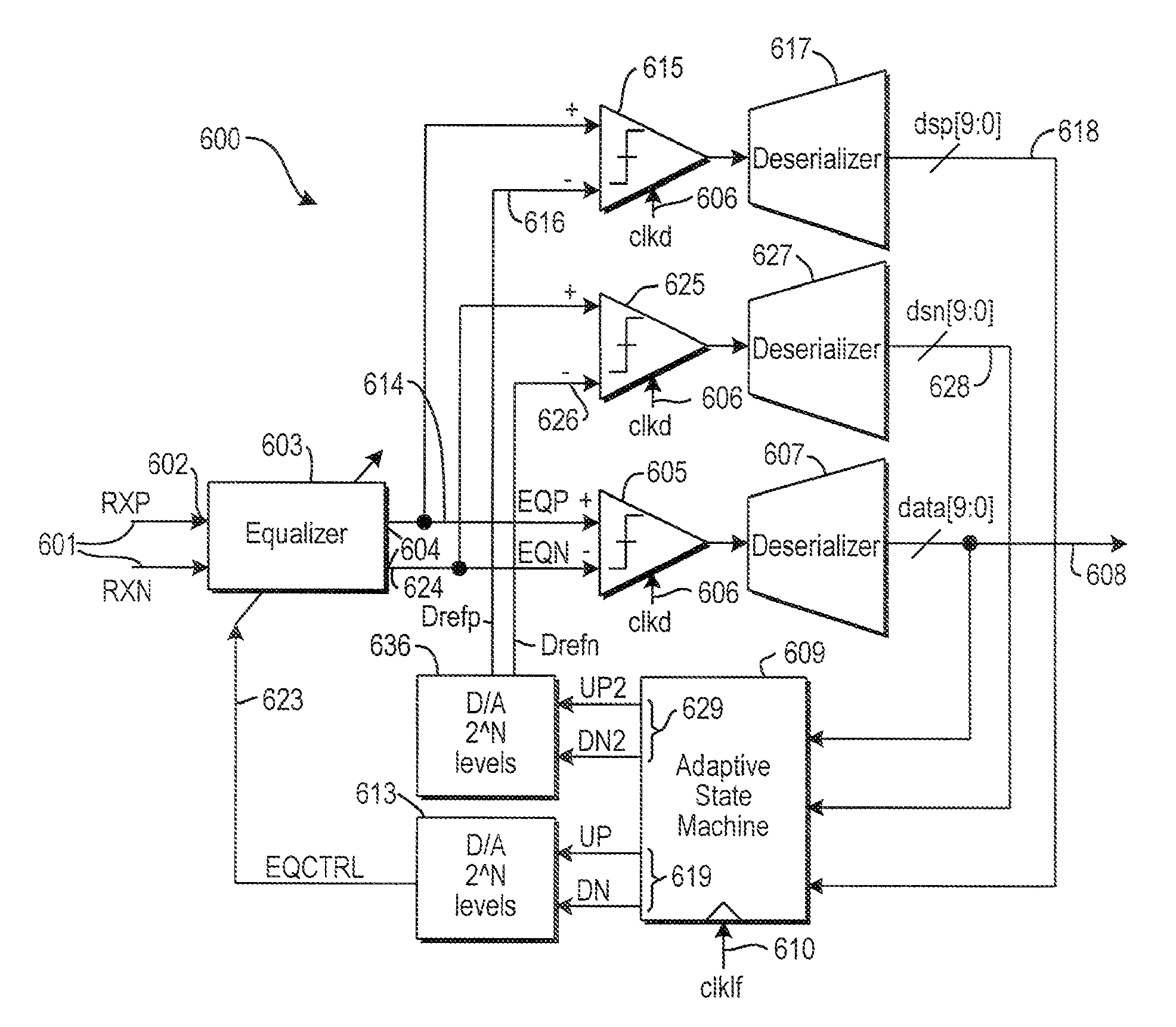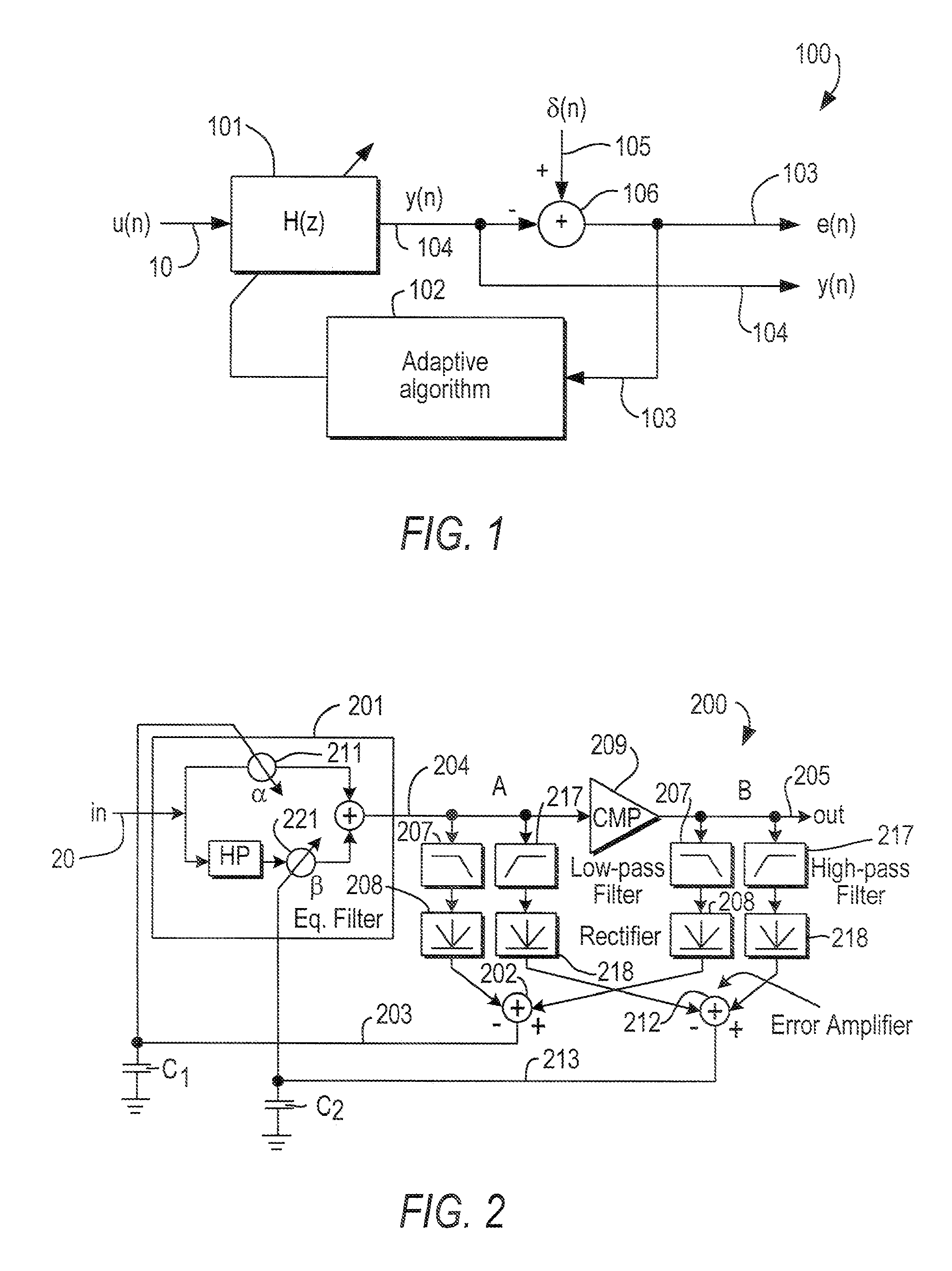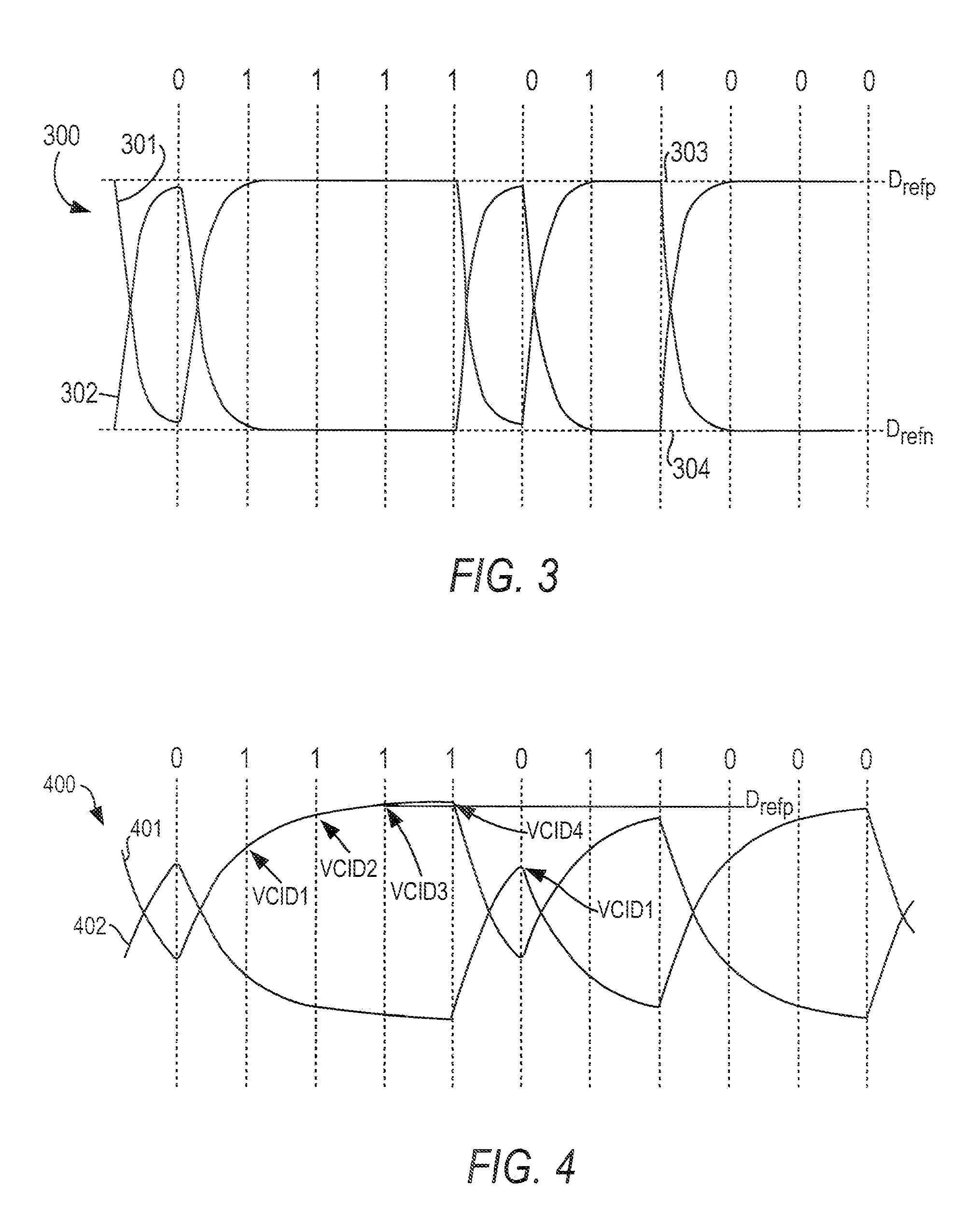Adaptive equalization using data level detection
a technology of data level detection and equalization, applied in the direction of amplitude demodulation, line-faulst/interference reduction, pulse technique, etc., can solve the problem of jitter in the ideal timing of a signal, and it is difficult to determine the optimal setting using trial-and-error
- Summary
- Abstract
- Description
- Claims
- Application Information
AI Technical Summary
Benefits of technology
Problems solved by technology
Method used
Image
Examples
Embodiment Construction
[0018]As discussed above, adaptive equalization is performed at high data rates in accordance with the present invention by converting incoming serial data to parallel digital form and processing them in a dual feedback loop including processing circuitry, which may be programmable, to determine the reference level and to select the equalization curve. The processing circuitry preferably is an adaptive state machine.
[0019]Adaptive equalization is well known and can be diagrammed generally as shown in FIG. 1, which can be viewed as either an adaptive equalization method or circuitry 100. In method / circuitry 100, a variable transfer function 101 operates on incoming signal 10. Adaptive algorithm 102 controls variable transfer function 101 based on an error signal 103 generated by comparing the equalized output 104 to a reference signal 105 at 106. Most or all adaptive equalization techniques, including that of the present invention, fall into this general class. However, the various t...
PUM
 Login to View More
Login to View More Abstract
Description
Claims
Application Information
 Login to View More
Login to View More - R&D
- Intellectual Property
- Life Sciences
- Materials
- Tech Scout
- Unparalleled Data Quality
- Higher Quality Content
- 60% Fewer Hallucinations
Browse by: Latest US Patents, China's latest patents, Technical Efficacy Thesaurus, Application Domain, Technology Topic, Popular Technical Reports.
© 2025 PatSnap. All rights reserved.Legal|Privacy policy|Modern Slavery Act Transparency Statement|Sitemap|About US| Contact US: help@patsnap.com



